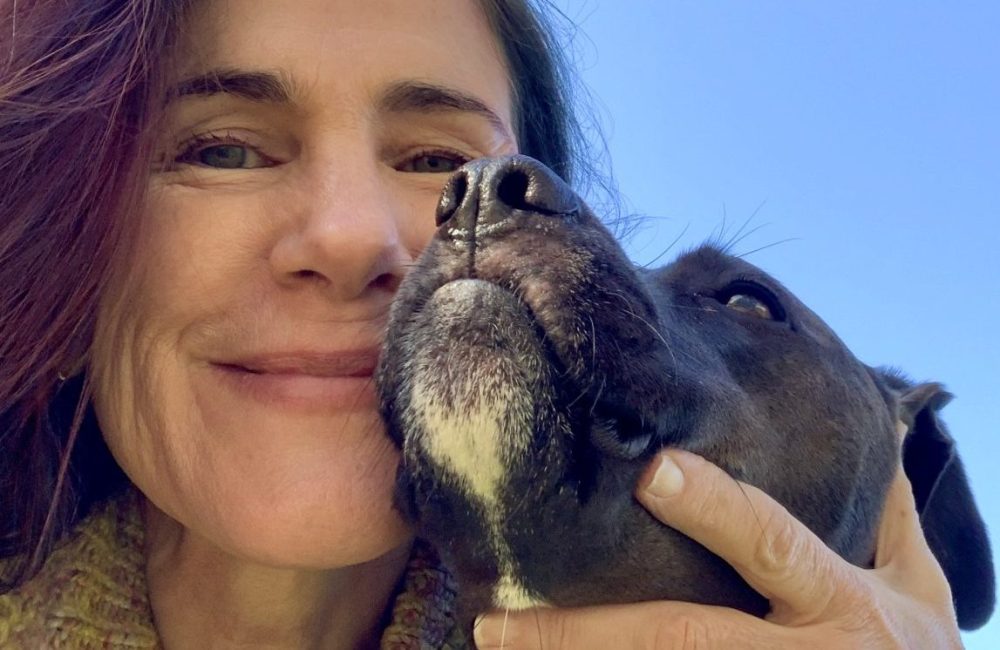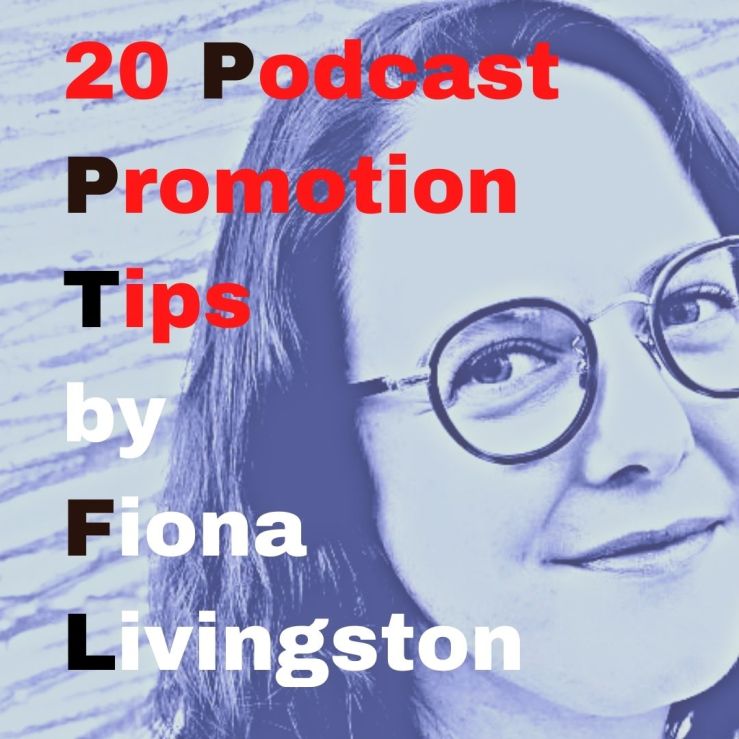Reading… writing… listening! Hey, if “seeing is believing,” why doesn’t the same go for tasting and feeling and smelling — and hearing too?
When’s the last time you tuned into your fave radio show? Same as radio shows, podcasts are story readings, performances, interviews, and monologues. Radio shows are often repackaged into podcasts that allow you to dictate when to tune in.
When my first novel, “Flamenco & the Sitting Cat,” is edited (and then its sequel, “Tango & the Sitting Cat”), I’ll podcast them to create a buzz for when it’s published. Here’s an experimental podcast episode I produced borrowing a friend’s short story. A video version of it is on Youtube as well.
Creatives who want to control their work and keep 100% of their profits must become their own promoters. Podcasts are one way to get the word out. First, though, people need to know you have a podcast.
Here to give us 20 ways to do that is London-based Fiona Livingston. She blogs about marketing and podcasting on Medium, and produces The Culture Bar, an arts and culture-related podcast…
“20 Podcast Promotion Tips,” by Fiona Livingston
You’ve poured your heart and soul into creating and recording your podcast series on a subject you are knowledgeable about. Now you need to get your podcast in front of audiences who are as passionate about the subject as you are.
But how do you get your podcast in front of listeners when there are 850,000 active podcasts out there in the world?
This article covers the best, easiest, and most effective podcast promotion ideas to help you build your audience and market your podcast.

First, let’s make sure you have some key podcast staples under your belt before you start promoting your podcast:
- Podcast cover artwork. My top advice for creating cover artwork is to be clear. Once uploaded onto your podcast distributor, the size of your artwork will reduce a lot, so you want something bold, simple, and eye-catching. You can create your artwork by using templates on Canva, or if you have a mac you can use Keynote which is a very powerful design tool. Here are some great cover artwork examples to inspire you.
- Episode titles. The way you title your episodes has a big impact on your total download numbers. My main tips for you are to NOT use a naming system such as ‘Episode 4’ or ‘XYZ Podcast: Episode 4’. You need to let your audiences know at a glance what the topic is so, your title should be as descriptive as possible.
- Record 3-5 podcasts before your launch/start of your next season. This will ensure you have a regular schedule of events planned out and also gives you time to record future episodes. Make sure you have a launch schedule in place. For example, in the first week, you can release 2 or 3 podcasts to keep audiences hooked.
- Create a dedicated podcast website. This can either be a section on an existing website or you can create a podcast website for free using providers such as WordPress, Wix, or Squarespace. These sites give you a valuable presence on search engines and act as a home for your podcast so audiences can find out more about you. This also gives you further opportunities to supplement your podcast with more content to show your expertise and passion.
Ok so now you have a great podcast recorded, fantastic eye-catching cover artwork, and launched a dedicated website. Let’s start promoting your series with these top tips (this list focusses on free marketing actions):

- Add your podcast to a distribution platform. Upload your podcast MP3 file to distribution sites such as Podbean (free and priced programmes) and Anchor (free) and they will automatically send your podcast episodes to a variety of podcast sites such as Apple Podcasts, Spotify, Google Podcasts, and Amazon Alexa. Apple podcasts capture 32% of podcast listeners and downloads so your podcast must appear here.
- Meta-tag your podcast. On your chosen distributor and website, make sure you complete the meta-tagging options. This is the place to add keywords relating to your podcast, so it shows up in search results and makes you discoverable.
- Create a promotional trailer. This helps audiences understand what your podcast series is about, and you can embed this on your website and social media channels. Find tips on how to make a trailer here.
- Add show notes and include hyperlinks for each podcast episode. It is good practice to give a short summary and overview of what is included in your podcast episode. This is also a great place to add links to your guest/s or any resources that you mention in the episode.
- Leverage guest audiences. Make it easy for guests to share your podcast by creating audio snippets, quote cards, or prewritten tweets for them so they can easily use these on their social media channels.
- Create podcast artwork for each episode. Using your main cover artwork template, adapt it to show the title of each episode, and change the imagery to give each episode an identity and theme.
- Create a dedicated podcast social media channel. Set up a Twitter, Facebook, LinkedIn, or Instagram profile to promote your podcast.
- Create quote cards in Canva or Pablo. Select attention-grabbing quotes from each episode. This gives listeners great insight into what’s to come.
- Share rich media. Create extra content such as soundbites, audiograms (using tools such as GetAudiogram), behind-the-scenes photos, or teaser video clips to build excitement about your episode. Also, Twitter has an embed feature using Soundcloud so you can play the audio directly from a Twitter stream.
- Tease the episode 24 hours ahead of time e.g. 3x on Twitter and 2x to Facebook/Instagram. Talk about behind-the-scenes content in Instagram Stories.
- Create an audio-video to share on YouTube. If you use a provider such as Podbean they will automatically create a video for you and send it to your YouTube page. YouTube is a huge search engine for content and should be included in marketing your podcast. Or you can create a video using a tool such as Screenflow (free trial period) and use free video clip assets from Pexels.
- Audio transcription. To ensure your podcast is accessible and aid SEO discovery, you can create an audio transcription and add it to your podcast website. You can use audio transcription tools such as Otter.ai (free for up to 40 minutes, otherwise it’s $9.99 per month) to help you do this.
- Include your podcast in your e-newsletter. You can easily create your own e-newsletter using email service provider such as Mailchimp, Flodesk or Campaign Monitor to manage your subscribers and send them notifications about your latest podcast. Mailchimp and Flodesk have free basic tiers, and Campaign Monitor starts at $9/month.
- Publish podcast-themed blog content on your website. A useful way to keep your website content fresh and to also include extra in-depth content on your podcast theme.
- Be a guest on other people’s podcasts. A great way for you to showcase your knowledge and build awareness of your podcast.

Here is a list of other important Podcatcher sites your podcast should feature on to generate greater visibility:
- Overcast
- Stitcher
- Podcast Addict
- Podcast subreddit
- PodcastLand
- TuneIn
- Bello Collective
- Deezer (great for French/EU audiences)
- Podcast Listen notes
Got a podcast or want to start one?



[…] Click H-E-R-E for my podcast page at AnchorFM. This week’s show is the audio version of the post below this blog post of “20 Podcast Promotion Tips by Fiona Livingston.” […]
LikeLiked by 1 person
[…] Click H-E-R-E for my podcast page at AnchorFM. This week’s show is the audio version of the post below this blog post of “20 Podcast Promotion Tips by Fiona Livingston.” […]
LikeLiked by 1 person
[…] Click H-E-R-E for my podcast page at AnchorFM. This week’s show is the audio version of the post below this blog post of “20 Podcast Promotion Tips by Fiona Livingston.” […]
LikeLiked by 1 person